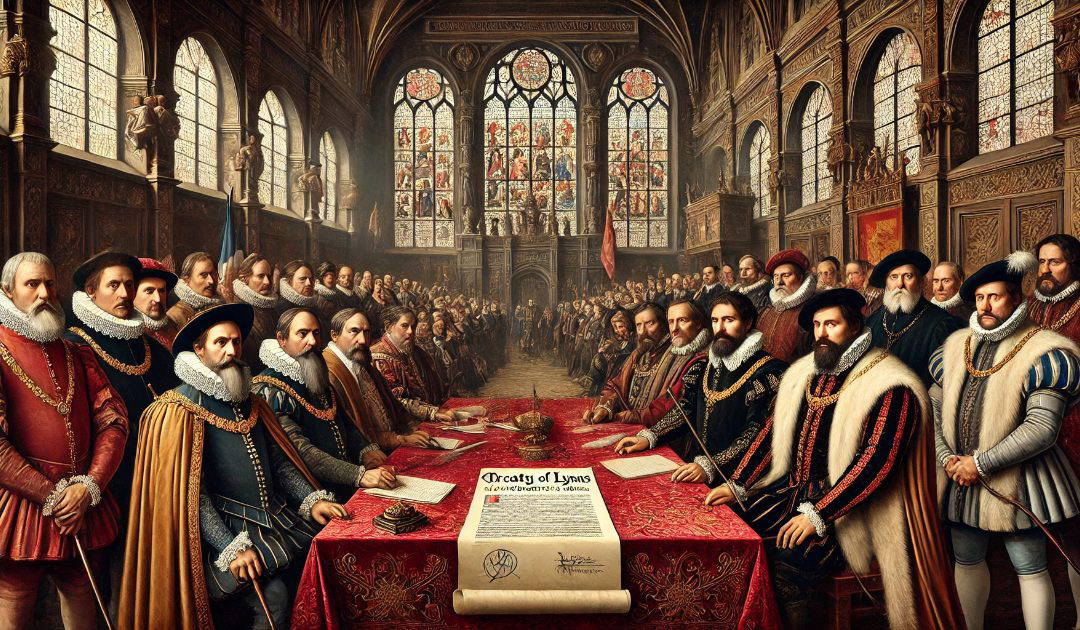The Treaty of Lyon, signed on 31st January 1504, was a significant diplomatic agreement between the Kingdom of France and the Kingdom of Spain. This treaty arose from the complex political landscape of early 16th-century Europe, marked by territorial disputes, dynastic ambitions, and the shifting alliances of powerful monarchies.
The backdrop to the Treaty of Lyon is rooted in the long-standing rivalry between France and Spain, particularly over territories in Italy. During this period, both nations were vying for control over various Italian states, which were seen as strategically important for trade and military positioning. The Italian Wars, a series of conflicts from the late 15th century to the mid-16th century, were characterized by shifting alliances and the involvement of multiple European powers, including the Holy Roman Empire.
By the time of the Treaty of Lyon, the Kingdom of France, under King Louis XII, had already made significant territorial gains in Italy, including the conquest of the Duchy of Milan. However, the Spanish Crown, led by King Ferdinand II of Aragon and Queen Isabella I of Castile, was also keen on expanding its influence in Italy, particularly in the Kingdom of Naples.
The Treaty of Lyon was primarily focused on resolving the territorial disputes between France and Spain in Italy. One of its key provisions was the recognition of French control over the Duchy of Milan, which had been a point of contention between the two powers. In exchange for this recognition, France agreed to relinquish its claims to the Kingdom of Naples, which had been under Spanish control since the late 15th century.
Additionally, the treaty included provisions for the return of certain territories to their rightful rulers. For instance, the treaty stipulated that the city of Asti, which had been taken by the French, would be returned to the Duke of Savoy. This aspect of the treaty highlighted the broader goal of stabilizing the region and restoring order amidst the chaos of the Italian Wars.
The Treaty of Lyon was significant not only for its immediate territorial implications but also for its long-term impact on Franco-Spanish relations. By reaching an agreement, both nations aimed to reduce tensions and avoid further conflict over Italian territories. The treaty was seen as a diplomatic victory for both sides, as it allowed them to maintain their respective spheres of influence while minimizing the risk of war.
However, the treaty was not without its challenges. The political landscape in Italy remained volatile, with various local powers and factions resisting foreign domination. The ambitions of both France and Spain continued to fuel tensions, leading to future conflicts despite the treaty’s initial promise of peace.
In the years following the Treaty of Lyon, the dynamics of power in Italy continued to shift. The Italian Wars persisted, with various states and alliances forming and dissolving. The treaty’s provisions were tested as both France and Spain sought to assert their influence over the Italian peninsula.
In conclusion, the Treaty of Lyon of 1504 was a crucial diplomatic agreement that aimed to resolve territorial disputes between France and Spain in Italy. By recognizing French control over Milan and acknowledging Spanish dominance in Naples, the treaty sought to stabilise the region amidst the ongoing Italian Wars. While it provided a temporary resolution to some conflicts, the underlying tensions between the two powers persisted, foreshadowing further struggles for control in Italy. The treaty exemplified the intricate web of alliances and rivalries that characterized European politics during this tumultuous period, shaping the course of Italian history and Franco-Spanish relations for years to come. It seems strange to think that the Treaty of Lyons was more recent to my ancestor, Sir Anthony Standen, than the Treaty of Versailles is to me. It also shaped his adventures.

